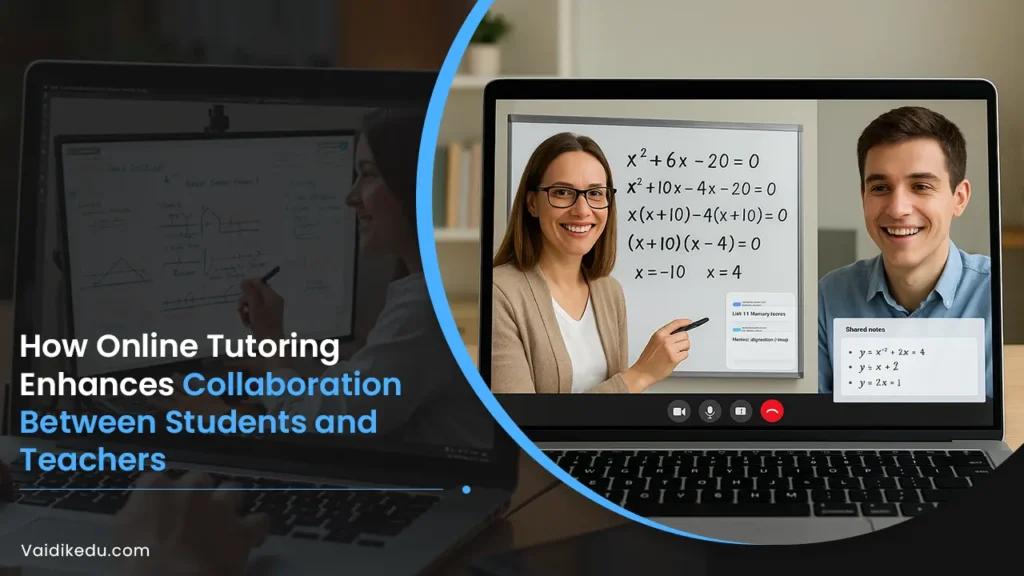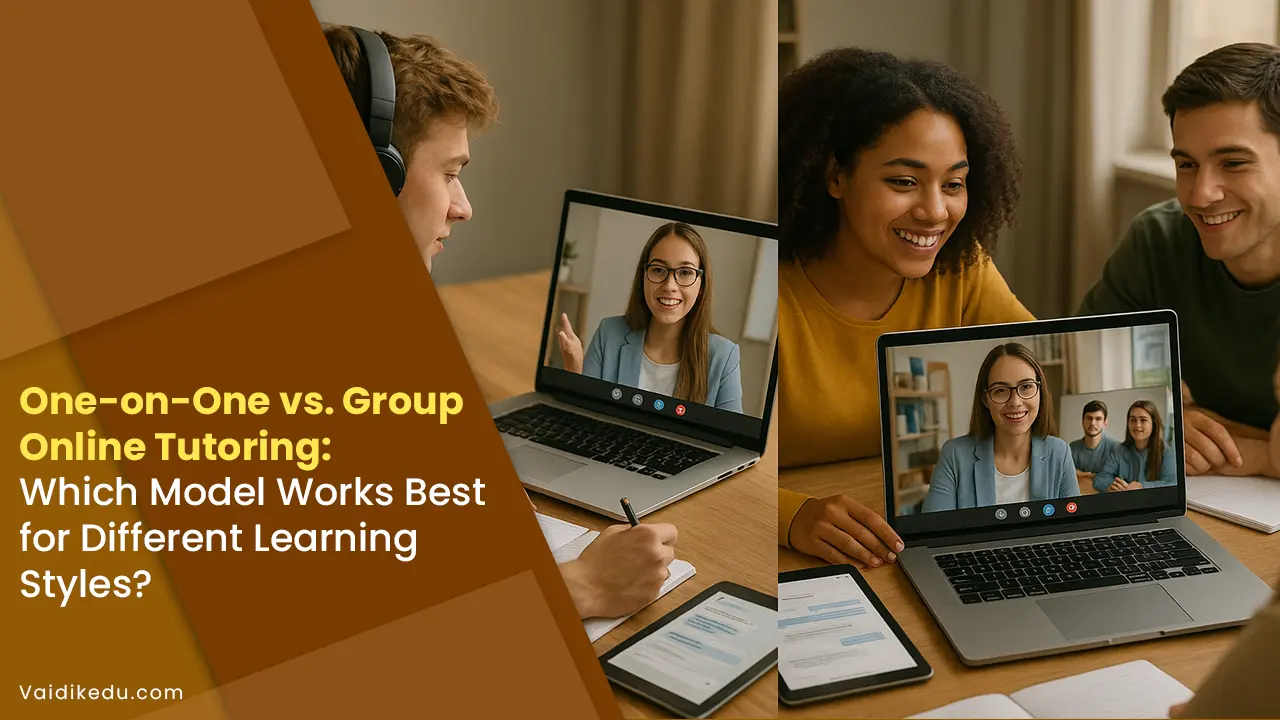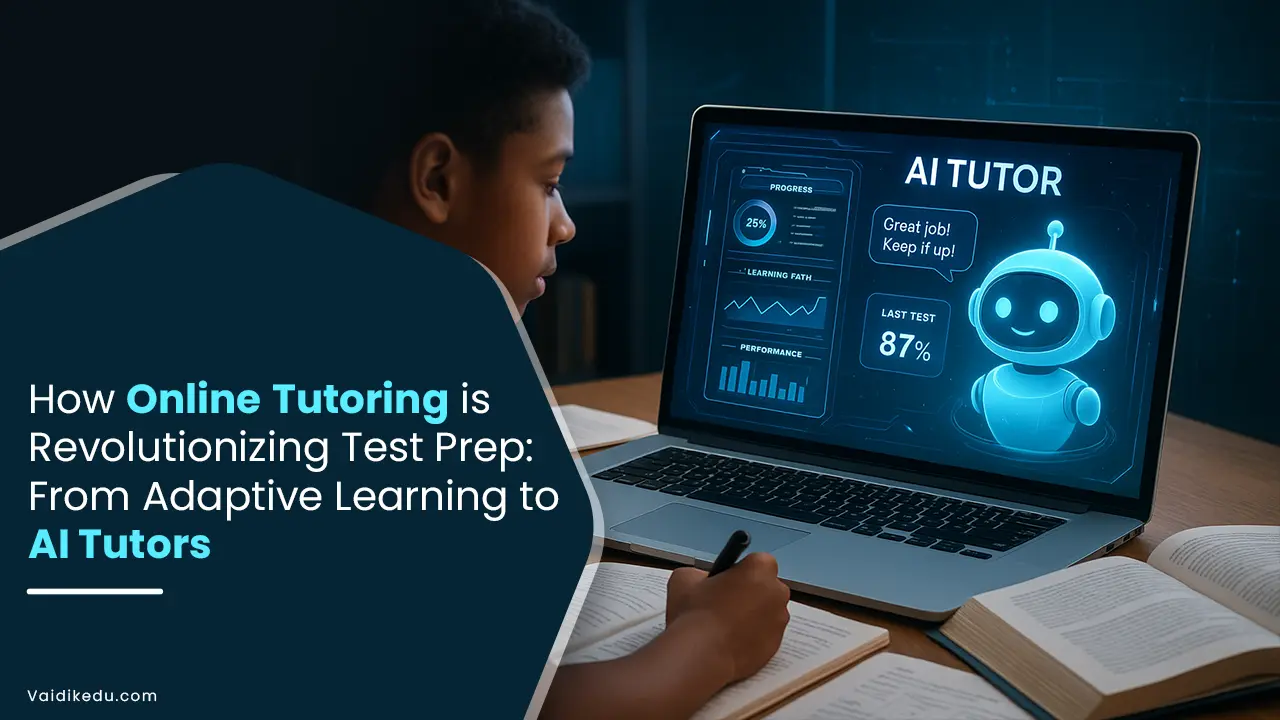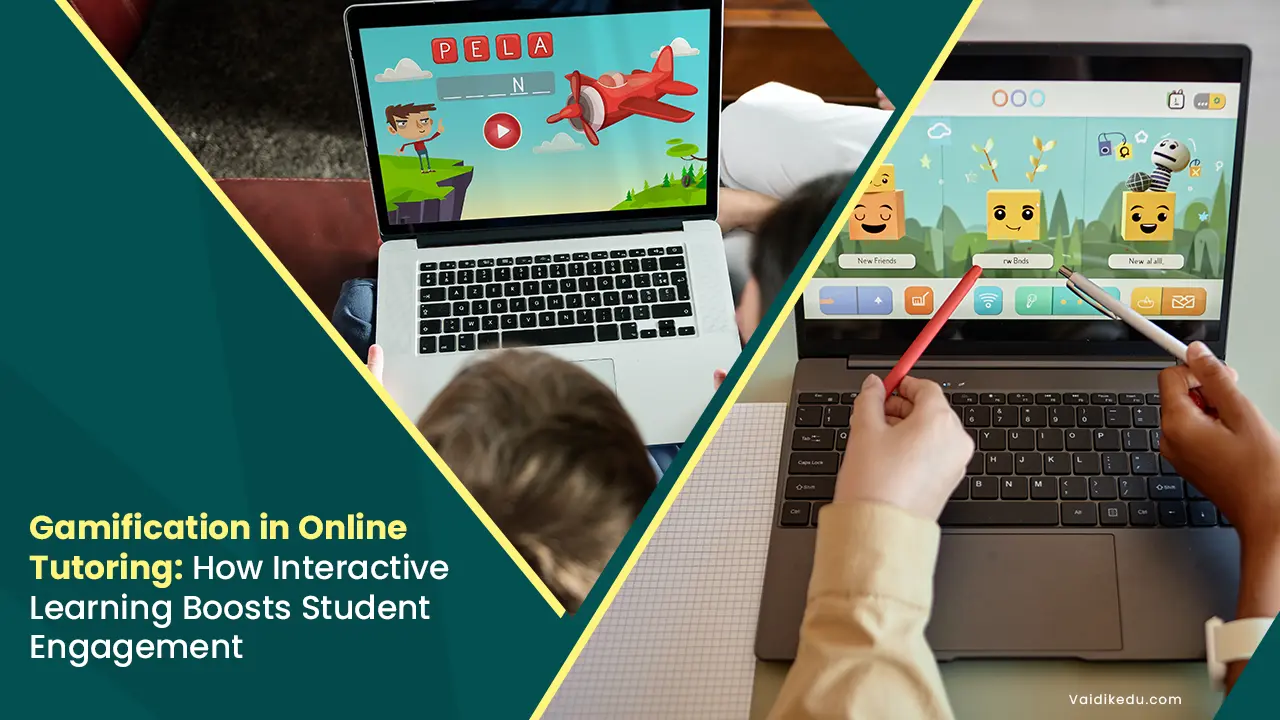Online tutoring has revolutionized the education system. Online tutoring overcomes geographical boundaries and provides a more interactive and collaborative learning environment than traditional classroom settings. This online tutoring approach is more personalized, flexible, and real-time as compared to the traditional method.
The nature of this approach promotes a collaborative relationship where the teacher acts as a facilitator rather than a knowledge-dispensing provider. Online tutoring allows students to be actively involved in their learning journey, while the teacher caters to individual needs through virtual classrooms, shared resources, and instant feedback mechanisms.
In this blog, we shall discuss how online tutoring enhances collaboration, its benefits, challenges, and future implications for education.
The Role of Collaboration in Education
One of the critical components of effective education is collaboration. It encourages critical thinking, active participation, and the sharing of knowledge and perspectives among both the students and teachers. Collaboration in traditional classrooms is often restricted by time, space, and strict curricula. Online tutoring removes all these constraints and ensures smooth communication and shared learning experiences.
How Online Tutoring Improves Collaboration
1. Personalized Learning Experiences
Online tutoring allows customized learning programs according to the needs of the students. Adaptive learning technology helps assess a student’s strengths, weaknesses, and type of learning ability for customized teaching. This leads to a better interactive relationship as the student can understand the teachers while the latter will be in a position to provide proper assistance.
2. Interaction And immediate feedback
Unlike traditional teaching, online tutoring enables real-time interaction between the students and the teacher through video conferencing, live chats, and virtual whiteboards. The immediate response helps clear up any doubts and confusion. For instance, a student having a math problem can receive step-by-step guidance from his tutor in real-time.
3. Shared Digital Resources
Further capabilities for the sharing of digital resources include eBooks, PDFs, videos, and even interactive exercises, giving students more knowledge at their fingertips and the possibility for teachers to have insight as to when such a student is getting lost on particular issues or problems.
Documents shared also can be edited by a group in the same place as with collaborative projects and group assignments.
4. Asynchronous Learning Opportunities
Many online tutoring platforms incorporate features of asynchronous learning, including recorded lectures, discussion forums, and self-paced modules. These features allow students to review materials, prepare questions, and then engage in live sessions in a more focused and productive manner.
5. Breakout Rooms For Group Collaboration
Many online tutoring websites include breakout rooms. In these, students work in small groups. The teacher can view the discussions, provide input, and facilitate peer collaboration. This is useful for developing teamwork skills and fostering peer learning.
6. Global Connectivity
Online tutoring transcends geographical boundaries to unite students and teachers from diverse cultures and educational systems. A global reach also facilitates the sharing of different ideas and perspectives to make learning that much richer. A student in India can collaborate with a tutor in the United States, where students are exposed to different teaching styles and methodologies.
7. Interactive Tools And gamification
Interactive tools, such as quizzes, polls, and gamified activities, keep learning interesting and collaborative. For example, the teacher can create group quizzes to help in teamwork and community problem-solving.
8. Parental Involvement
Online tutoring sites often include features for tracking parental involvement, such as progress reports and session recordings. This makes it possible for parents to be included in collaboration with teachers on the child’s progress and overcoming certain challenges.
Benefits of Enhanced Collaboration Through Online Tutoring
1. Improved Student Engagement
Interactive tools and personalized approaches keep students engaged, making them active participants in the learning process.
2. Better Academic Outcomes
Collaboration leads to a deeper understanding of subjects as students receive individualized attention and instant feedback.
3. Increased Confidence
Students feel more confident when their questions are addressed promptly and their contributions are valued.
4. Teacher Development
Online tutoring also introduces teachers to new ways of teaching, tools, and perspectives internationally.
5. Flexibility And Accessibility
Both the learner and the educator can use the resources and sessions at their ease without fixed time by which learning is more flexible and accessible.
Challenges And Solutions
Online tutoring encourages cooperation but it brings its issues as well:
1. Technical Problem
Internet connectivity and software bugs tend to sabotage cooperation.
Solution: The service-providing platforms should have offline resources along with user-friendly interfaces for reducing technical barriers.
2. Lack of Personal Touch
Virtual communication may not have the warmth of face-to-face.
Solution: Tutors can use video calls and personalized messages to build rapport with students.
3. Time Zone Differences
Global connectivity may create scheduling conflicts.
Solution: Flexible scheduling and recorded sessions can solve this problem.
4. Digital Divide
Not all students have access to devices or reliable internet.
Solution: The government as well as institutions have to shell out money and invest in creating infrastructure so that education is provided online for one and all.
Future Prospects of Online Tutoring
The Future of online teaching is brightening up with how fast technology moves. Technologically, collaboration going to be simpler in the upcoming future as noted below:
1. AI-Based Coaching
AI shall analyze the way students behave and deliver highly differentiated learning experiences in the future.
2. Virtual Reality (VR) And Augmented Reality (AR)
Immersive technologies will create realistic simulations, allowing hands-on learning and collaboration in virtual environments.
3. Blockchain For Secure Collaboration
Blockchain technology can help secure shared resources and provide verified credentials for students and teachers.
4. Lifelong Learning Ecosystems
Online tutoring platforms will evolve into lifelong learning ecosystems supporting skill development and collaboration at every stage of life.
The Expanding Role of Online Tutoring in Collaboration
The integration of online tutoring has been incorporated into modern education, ensuring not only easier access to education but also enhancing the depth and quality of collaboration between students and their teachers. A collaborative dynamic is at the core of meaningful learning experiences for both parties; hence, active participation and contribution to the process.
The use of advanced technologies and innovative strategies in online tutoring has set up a strong environment of continuous engagement that leads to better understanding and stronger educational relationships.
- Streamlining Communication Using Technology
Collaboration, the online tutorial aids in its communication process through video conferencing, live chat, and voice messaging. Video conferencing connects the students and teacher in one seamless platform, an open channel where immediate discussions may take place, clarifying the minds of the students and raising further questions in return. This fluidizes and dynamizes learning.
In addition, artificial intelligence in communication tools has increased the quality of interaction. For instance, an AI chatbot can answer basic queries instantly, thus leaving more time for teachers to handle complex or personalized aspects of instruction. In addition, speech-to-text and translation features allow students from diverse linguistic backgrounds to effectively communicate with their tutors.
- Facilitating Peer-To-Peer Interaction
While the intention of online tutoring often lies with the teacher-student relationship, it can also serve to create and foster peer-to-peer collaboration. For example, online tutoring programs introduce elements such as group study sessions, discussion forums, and collaborative projects.
This environment is encouraged so that students can learn from each other. For example, Zoom and Microsoft Teams are platforms that can easily use breakout rooms. Breakout rooms allow for a group of small students to collaborate on assignments or problem-solving under the guidance of the tutor.
This peer interaction fosters a sense of community and teamwork, qualities critical for personal as well as professional development. It also exposes the students to multiple facets of a subject, thereby broadening their knowledge and stimulating critical thinking.
- Building Emotional Connections in Virtual Spaces
While online tutoring lacks the physical presence of traditional classrooms, it makes up for it in emotional connection through personalized attention and continuous feedback. Tutors can use virtual tools to celebrate student achievements, track progress visually, and provide encouragement, boosting students’ confidence and motivation.
Platforms with integrated learning analytics also help tutors monitor emotional cues, such as hesitation or frustration, allowing them to address concerns promptly.
This focus on emotional well-being strengthens trust and rapport between students and teachers, making the learning environment more collaborative and conducive to success.
Conclusion
It has become the most potent tool for the advancement of collaborative activity between students and teachers. Online tutoring provides technological support through highly interactive, flexible, and personalized learning experiences that empower both sides.
Such concerns as a digital divide and technical issues remain, yet innovative solutions and ongoing progress in technology are opening the gateway to an all-inclusive landscape in education.
Online tutoring will transform education as we head into the future, bringing together students and teachers to forge meaningful relationships and learn skills that help them face the rapidly changing world.
Frequently Asked Questions
Online tutoring allows for collaboration by using real-time interactions, shared digital resources, and tools like breakout rooms and discussion forums that facilitate active participation.
Yes, online tutoring websites have numerous tools in support of group learning, such as breakout rooms and collaborative assignments. This is excellent for teaming and peer learning.
Teachers can build rapport by personalizing interactions, using video calls, and keeping communication channels open to listen to the student’s concerns and earn trust.









